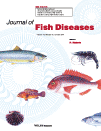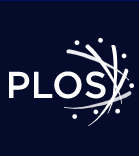The effect of fish stocking density and dietary supplementation of vitamin C and micronutrients (Mn, Zn and Se) on the development of systemic granulomatosis in juvenile meagre (Argyrosomus regius)

Abstract
Systematic granulomatosis is a chronic disease that affects the majority of farmed meagre (A. regius). Nutritional imbalances and overcrowding can increase the risk to suffer oxidative stress, and consequently, impact the incidence of granulomatosis. In order to evaluate this, juvenile meagre were fed five isolipidic (16.7%) and isoproteic (49.6%) fish meal and fish oil-based feeds prepared by adding different levels of vitamin C, minerals (Mn, Zn, Se) with constant vitamin E and K (300 and 35 mg/kg respectively): Diet KEC (100 mg/kg C), Diet KEC+Mn/Zn/Se (100 mg/kg C, 40 mg/kg Mn, 200 mg/kg Zn, 1.5 mg/kg Se), Diet KECC (600 mg/kg C), Diet KECCC (1200 mg/ kg C), Diet KECCCC (3200 mg/kg C). All diets were tested at 3.20 kg/m 3 , but diets KECC and KECCCC were also tested at 6.20 kg/m 3. Growth performance was only affected by stocking density, being lower at high density. The percentage of fish with granulomas was significantly lower in fish fed with the highest dietary vitamin C contents (KECCC and KECCCC) at low density. TBARS content was correlated with the percentage of granulomas in the liver (R 2 = 0.9439, y = 0.003x − 0.1242) denoting the involvement of an imbalance oxidative status in the appearance of granulomas. The present results show that high levels of vitamin C (1200-3200 mg/kg C) and low stock density (3.20 kg/m 3) favours the growth of juvenile meagre, reducing the lipid peroxidation indicators and decreasing the incidence of granulomas, which confirms that this pathology is mostly triggered by the deficiency of antioxidant nutrients, particularly vitamin C. K E Y W O R D S Granulomatosis, Mn, oxidative stress, Se, stocking density, vitamin C, vitamin E, Zn

